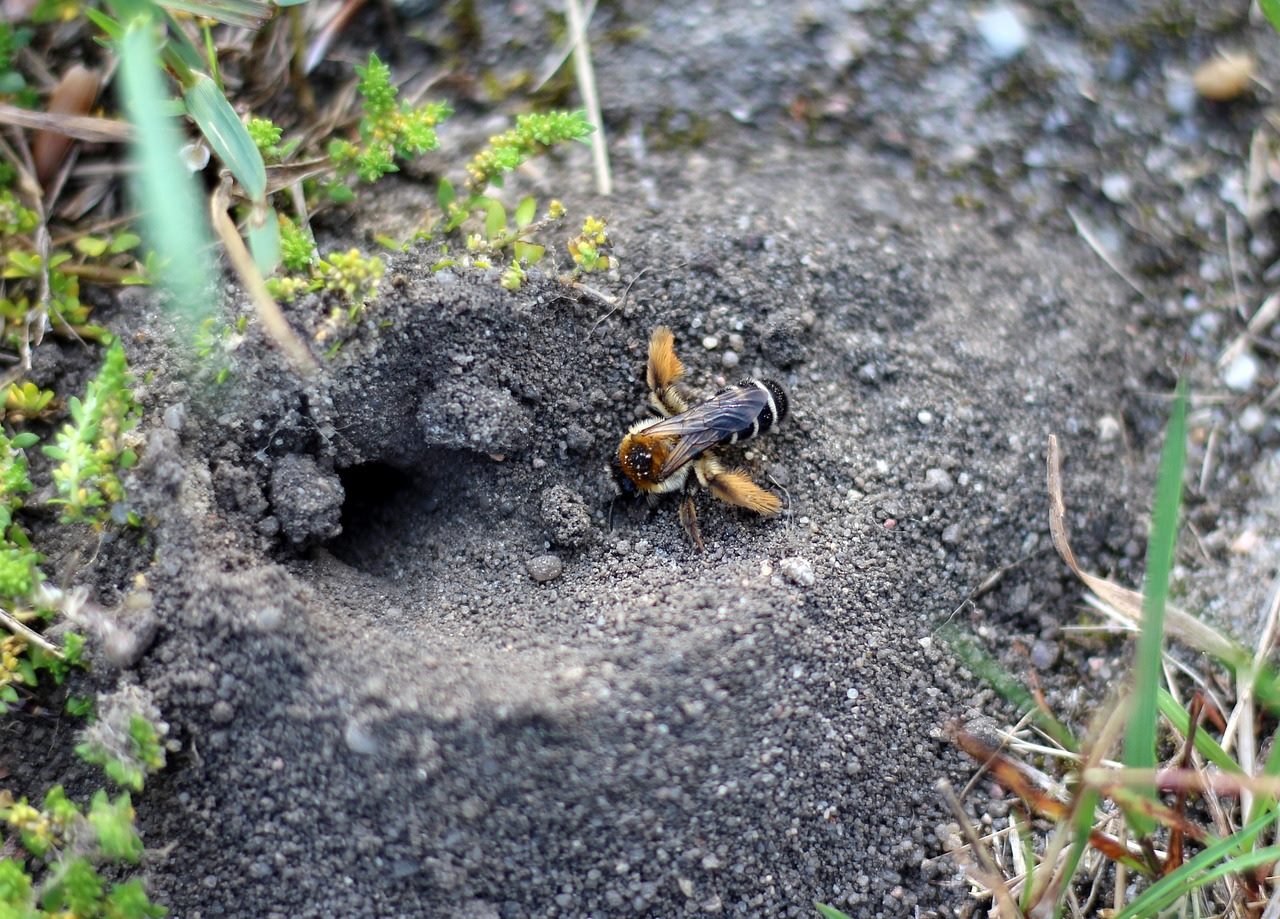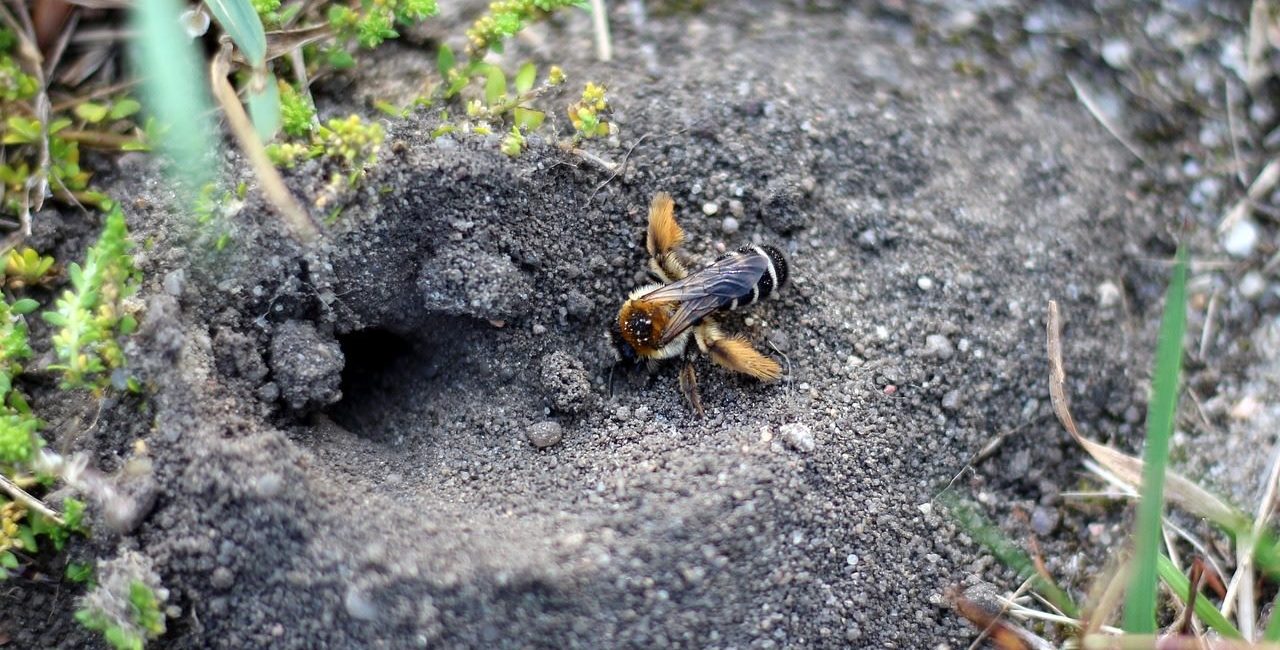Burrowing bees return to the heath
These occur every year, have been identified as Solitary bees and pose no threat to Children or animals.
Solitary bees vary considerably in size, appearance and where they choose to nest. Roughly 70% are called mining bees and nest in underground burrows. Bees that nest in houses are called cavity nesting bees.
Do not live in colonies, produce honey or have a queen.
Do not produce wax to construct the cells inside the nest instead different species use different materials to construct their cells and nests.
Drink nectar directly from the flower and spend most of their time collecting pollen which is mixed with a small amount of nectar as food for their young.
Are fantastic pollinators: a single red mason bee is equivalent to 120 worker honeybees in the pollination it provides.
Do not have pollen baskets for carrying pollen, meaning that each time they visit a flower they lose far more pollen than social bees, which makes them much better pollinators.
Provide each larvae with everything it needs but they do not tend to the young as they grow and never get to see their offspring emerge.
Are non-aggressive and do not swarm.
Safe around children and pets. growwilduk.com




 Tree Planting and distribution
Tree Planting and distribution 